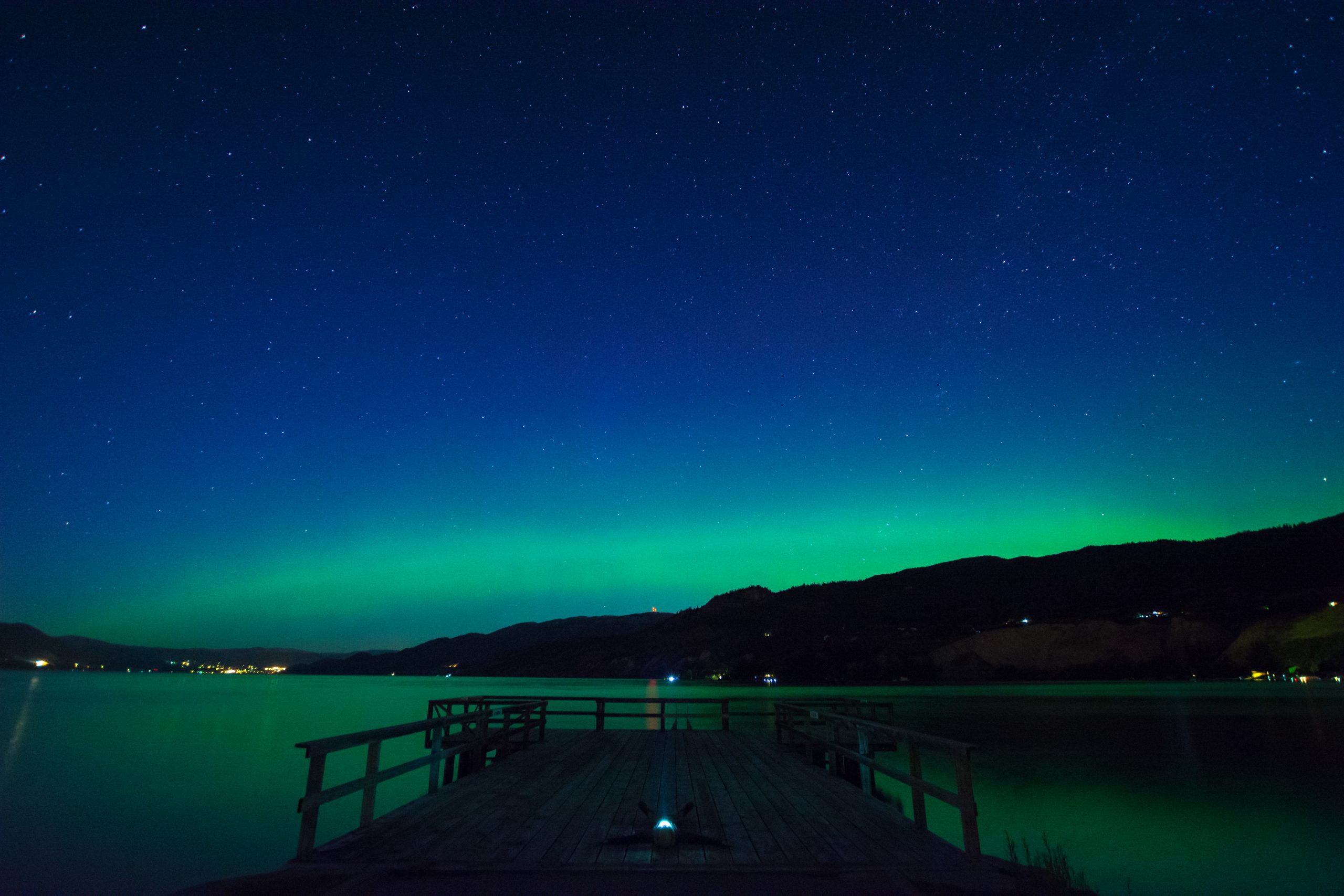How to Find Good Places to Stargaze
Are you feeling wistful for star-streaked views of the night sky? Hoping to get the most out of a meteor shower? Or perhaps you live in a large city and you’ve never even seen the Milky Way?
If you’re hoping to do some skywatching, but you’re not quite sure how to find a great spot, we have you covered. Here are some key things to know about how to find the best places for stargazing.
A darker sky means more Stars
To begin with, you need dark skies away from city lights to see more stars. This is especially true if you want to be able to see the Milky Way. There are many more faint stars in the sky than bright ones, and only the brightest stars and planets are brilliant enough to see in bright, urban skies.
The reason for this is light pollution – stray light from urban areas scattered into the night sky. Light pollution is stray light from parking lots, sport complexes, street lights, and other human activity. It’s a combined effect of scattered light from these things that manifests as a glow in the night sky. The larger and more developed a city is, the more light pollution it tends to produce
For observing faint stars and meteors, the darker the sky, the better. The amount of skyglow from light pollution diminishes as you venture farther outward from a population center. So heading outward from town, at least 20 to 30 miles from the city limits, is key.
If you live near mountains, they can help to block light. Putting a ridge of mountains between you and the city can make a big difference. An alternative is get to the other side of a large wilderness area or body of water. Depending on how far outside of town you venture, you’ll likely still see a glow on the horizon in the direction of the city.
There’s a numeric scale, called the Bortle scale, to help would-be stargazers know how bright the sky is likely to be above a given location. It has nine levels, from class 1, which is the darkest sky you can find on Earth, to class 9, which is the most light-polluted city sky. You’ll only see the brightest stars and planets amid the glow of a Bortle-class-9 sky. For most of us, getting to a Bortle-class 3 or 4 location is dark enough for a great evening of stargazing. To get to darker sites generally requires long drives to remote spots, but it can be worth it! There are a variety of websites and apps that provide maps of light pollution and Bortle ratings.
The phase of the Moon matters
Don’t ignore the Moon. Take a look at what the current Moon phase is, and note when it rises and sets at your observing location. (There are lots of websites and apps that provide this info.)
For those hoping to observe meteor showers or the Milky Way, a bright Moon can be the thing that causes you to stay home on a given night. When it’s close to full – for the week or so before and after the full moon phase – the Moon is quite bright, and creates a lot of skyglow. This has a similar effect to that of human-created light pollution, as it makes faint stars and other faint objects in the sky harder to see.
The best time to observe the stars, with regard to the Moon’s brightness, is the two weeks before and after the new moon phase. On these evenings the Moon is either absent from the sky all night, or sets within a couple of hours after sunset, or doesn’t rise until the pre-dawn hours.








allergy pills over the counter best allergy medicine without antihistamine allergy medications for itching skin
prescription heartburn medication names order duricef 500mg pill
purchase accutane sale order isotretinoin 40mg generic purchase accutane for sale
prescription sleep meds for elderly phenergan generic
cost amoxicillin 250mg amoxicillin price amoxicillin price
generic zithromax 500mg order zithromax for sale order zithromax 250mg pill
neurontin 100mg price neurontin generic
azipro 500mg tablet azipro 250mg ca azithromycin cost
furosemide for sale lasix online buy
omnacortil 10mg price buy omnacortil sale order generic omnacortil
purchase amoxicillin generic amoxicillin pill cheap amoxicillin sale
buy doxycycline pill buy acticlate online
ventolin pills order albuterol 2mg inhaler albuterol generic
buy augmentin 375mg online buy augmentin medication
buy synthroid 75mcg online cheap buy generic synthroid 75mcg purchase levothroid generic
order levitra 10mg generic purchase levitra online
generic clomiphene buy clomiphene generic clomiphene 50mg cost
purchase tizanidine for sale zanaflex cost zanaflex pill
purchase rybelsus online cheap buy semaglutide 14 mg online cheap rybelsus 14 mg oral
prednisone 40mg brand prednisone online buy deltasone 40mg
cheap rybelsus semaglutide 14 mg for sale purchase rybelsus online
cost isotretinoin isotretinoin 10mg ca absorica price
order albuterol 4mg ventolin 4mg ca buy albuterol pills
amoxil for sale buy amoxicillin medication amoxil 500mg pills
augmentin pills buy augmentin cheap purchase amoxiclav pill
buy zithromax 500mg online cheap azithromycin 500mg generic azithromycin tablet
order levothyroxine online order synthroid 75mcg online order levothyroxine generic
prednisolone 40mg usa prednisolone 20mg drug brand prednisolone
clomiphene 100mg uk buy clomid 50mg pills purchase clomiphene online cheap
buy neurontin tablets buy neurontin generic buy neurontin 600mg generic
sildenafil 50mg uk viagra 100mg without prescription buy generic viagra 50mg
buy furosemide 40mg pills furosemide cost buy furosemide sale diuretic
rybelsus for sale online buy rybelsus generic buy rybelsus 14mg online cheap
buy monodox acticlate canada purchase doxycycline online cheap
online casino games for real money online slots real money usa best online gambling sites
buy vardenafil generic levitra price purchase vardenafil online cheap
lyrica drug generic pregabalin generic lyrica 150mg
hydroxychloroquine over the counter hydroxychloroquine 400mg canada buy hydroxychloroquine tablets
aristocort pills how to get aristocort without a prescription buy triamcinolone sale
cialis 5 mg order cialis 40mg sale cialis 40mg drug
clarinex tablet buy clarinex online cheap buy clarinex generic
order cenforce 100mg purchase cenforce for sale cenforce over the counter
purchase claritin without prescription order generic claritin 10mg claritin 10mg over the counter
buy aralen 250mg generic aralen pill buy chloroquine no prescription
dapoxetine 90mg price buy misoprostol tablets where can i buy misoprostol
metformin generic glycomet us purchase metformin pill
metformin brand oral metformin 1000mg glucophage 500mg for sale
orlistat online order buy orlistat generic buy diltiazem
lipitor 80mg usa order lipitor 80mg for sale lipitor for sale
where to buy amlodipine without a prescription purchase norvasc sale order norvasc 5mg
order generic zovirax buy acyclovir without prescription allopurinol drug
buy zestril without prescription how to buy lisinopril zestril cost
order generic rosuvastatin 10mg purchase zetia without prescription order ezetimibe 10mg generic
order omeprazole 20mg online order omeprazole 20mg for sale buy generic omeprazole online
motilium 10mg ca domperidone 10mg pill tetracycline 500mg canada
metoprolol 100mg canada lopressor 50mg for sale lopressor 100mg pills
buy generic flexeril buy ozobax without prescription buy baclofen generic
tenormin us atenolol tablet tenormin buy online
order toradol sale toradol 10mg pills buy cheap generic colchicine
fda medrol oral medrol cost medrol online buy
buy nothing day essay buy essay online uk pay for a research paper
buy inderal buy generic inderal clopidogrel 150mg usa